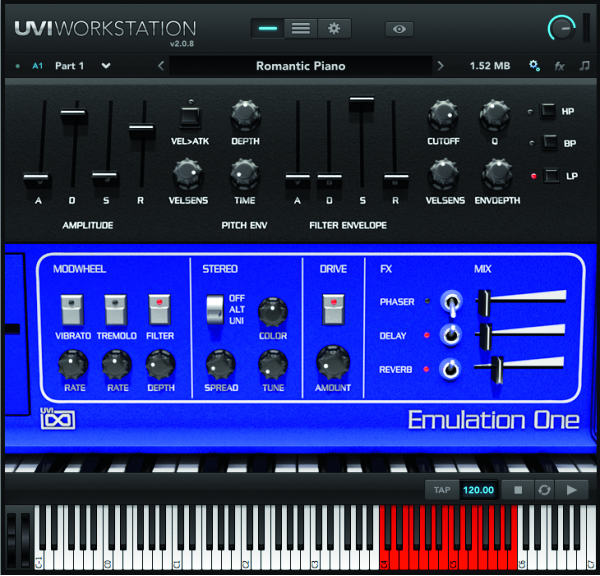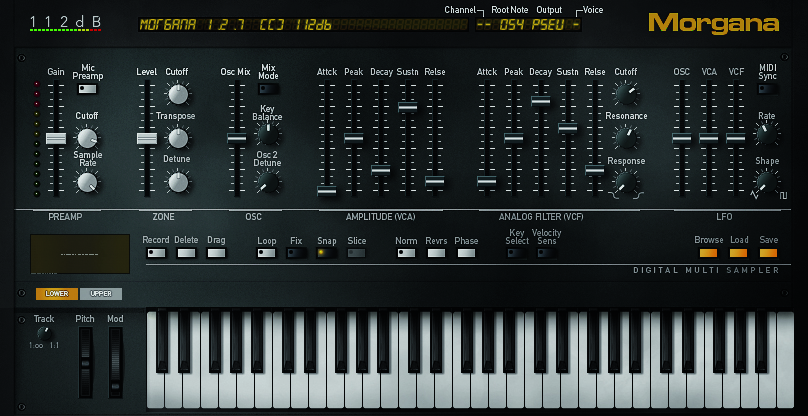Blast from the past: E-MU Emulator
Now remembered as a seminal instrument in music history, the Emulator was conceived in an act of desperation.

In 1981 a modular synth manufacturer came up with an instrument so new and groundbreaking that even they weren’t sure what to do with it
It’s hard to imagine a time when the word ‘sampler’ wasn’t a part of the production lexicon, yet that was exactly the case back at the start of the 1980s.
Though the Emulator wasn’t the first instrument to offer sampling, it would define the blueprint for future instruments and kickstart a still-thriving industry built on providing users with quality sample content. Now remembered as a seminal instrument in music history, the Emulator was conceived in an act of desperation.
Founded by Dave Rossum and Scott Wedge, E-MU got its start in the 70s, selling modular systems to universities and moneyed musicians, including such luminaries as Frank Zappa and Tangerine Dream’s Peter Baumann. The company also provided OEM designs for other instrument manufacturers, most notably the scanning keyboard in Sequential Circuits’ Prophet-5 synth.
By 1980, Sequential decided that they’d made enough changes to the Prophet’s design to put an end to E-MU’s royalty payments. Suddenly, E-mu’s planned $50k analogue dreamsynth (dubbed the ‘Audity') seemed a risky prospect to hang the fate of the company on. Fortunately for musicians everywhere, Rossum had recently attended the 1980 AES convention, where he took particular note of the Fairlight, the legendary (and legendarily expensive) computer-based musical workstation which counted 8-bit sampling among its many features. Realising that there might be a market for an instrument dedicated entirely to sampling, Rossum and Wedge set about designing the circuitry and writing the software for what would become the first Emulator.
Though referred to in-house as a ‘sampler’ by E-MU's boffins, the Emulator was not initially so designated, as the word would have been all but meaningless to musicians of the day.
Though referred to in-house as a ‘sampler’ by E-MU's boffins, the Emulator was not initially so designated, as the word would have been all but meaningless to musicians of the day. In fact, so new was the idea that the first Emulator lacked many features we now take for granted – filters and even envelope generators, for instance! When first released, there was no way to silence a sample once a key was depressed – it simply played through until the end of the file. But the Emulator was met with much interest on its announcement.
Legend has it that Stevie Wonder gave it a big hug upon playing it at the 1981 Winter NAMM show and immediately placed an order for the very first unit to come off the production line (serial number 001 had actually been promised to Daryl Dragon of Captain and Tennille, but Stevie’s name recognition won out). While initial excitement ran high, sales flagged after E-mu shipped the first two dozen or so units, despite such high-tech additions as a Release mode for sample playback. It was then that E-MU came up with its next innovation, by bolstering the included sound library to a sizeable collection of 25 floppies packed with convincing, playable instruments.
Want all the hottest music and gear news, reviews, deals, features and more, direct to your inbox? Sign up here.
This allowed musicians to get in and play the instrument, rather than fuss with the technicalities of sampling. It was just the thing, and E-MU eventually shifted around 500 of them. Not bad, given the £8050 price tag! By today’s standards, the Emulator’s 8-bit playback and limited memory seem quaint, though its lo-fi sound is now seen as rather desirable for some styles. Luckily, it’s easy enough to, erm, emulate with software!
Three great plugin alternatives

UVI Emulation One
They don’t come right out and say it, but it’s pretty evident that UVI’s Emulation One ROMpler was inspired by the Emulator, with its stark blue faux front panel and gritty lo-bit sound. As a bonus, the company throws in a drum machine that bears a striking resemblance to E-MU's Drumulator line of beatboxes.
READ MORE: UVI Emulation One

112dB Morgana
The woefully overlooked Morgana looks more like the budget-minded Ensoniq Mirage than it does the Emulator, but as this superlative soft sampler recreates the lovely lo-fi sound of vintage 8-bit sampling, it can be called into action as a suitable substitute for the E-MU as well. Utterly authentic 80s sound without the maintenance of owning an Emulator.
FULL REVIEW: 112dB Morgana

Togu Audio Line TAL-Sampler
Though not a clone of the Emulator, Togu Audio Line’s TAL-Sampler is an attempt to recreate the sound and workflow of classic vintage samplers. With that in mind, it offers the option to choose DACs based on those found on classic machines, including the Emulator’s successor, the only-slightly better-sounding Emulator II.
READ MORE: Togu Audio Line TAL-Sampler


Computer Music magazine is the world’s best selling publication dedicated solely to making great music with your Mac or PC computer. Each issue it brings its lucky readers the best in cutting-edge tutorials, need-to-know, expert software reviews and even all the tools you actually need to make great music today, courtesy of our legendary CM Plugin Suite.
